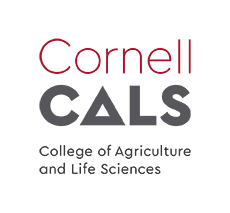Page 1 of 8

Abraham Baldwin Agricultural College School of Agriculture & Natural Resources
Tifton, GA
- Founded: 1908
- Setting: Rural
- Enrollment: 3,923

Alabama A&M University College of Agricultural, Life, and Natural Sciences
Normal, AL
- Founded: 1875
- Setting: Suburban
- Enrollment: 1,294

Auburn University College of Agriculture
Auburn, AL
- Founded: 1856
- Setting: Urban
- Enrollment: 29,286

California Polytechnic State University, San Luis Obispo College of Agriculture, Food and Environmental Sciences
San Luis Obispo, CA
- Founded: 1901
- Setting: Urban
- Enrollment: 21,037

California State Polytechnic University, Pomona Don B. Huntley College of Agriculture
Pomona, CA
- Founded: 1938
- Setting: Urban
- Enrollment: 24,314

Clemson University College of Agriculture, Forestry and Life Sciences
Clemson, SC
- Founded: 1889
- Setting: Small Town
- Enrollment: 19,669

Colorado State University College of Agricultural Sciences
Fort Collins, CO
- Founded: 1870
- Setting: Urban
- Enrollment: 28,864

Corban University Department of Natural Sciences and Mathematics
Salem, OR
- Founded: 1935
- Setting: Suburban
- Enrollment: 950

Cornell University College of Agriculture and Life Sciences
Ithaca, NY
- Founded: 1865
- Setting: Urban
- Enrollment: 23,600

Delaware State University College of Agriculture, Science & Technology
Dover, DE
- Founded: 1891
- Setting: Suburban
- Enrollment: 4,858
Which institutions have the best agricultural colleges?
This is a highly subjective question, and while there are some schools that are objectively better than others, it’s likely that there are multiple agricultural colleges that are a great fit for your planned studies and that will help you advance in the best way possible. To single out the “best” means we’d need to factor in your learning habits, class-size needs, research desires, and hands-on learning — in short, only you can decide which is the best agriculture college for you.
Land-grant institutions are going to have campus farms or other research facilities that will allow you to get some real “dirt time” in the field, while bigger schools may also have more cross-departmental opportunities — for instance, ag students collaborating with mechanical engineering students on agricultural technology. On the other hand, you may not like the scale and approach of huge lecture halls in your first couple of years, so a smaller liberal-arts college with an agriculture program might be the better fit. There could be better possibilities for you to try a variety of things, and collaboration with peers and personalized attention from professors are commonplace in smaller schools.
Why should I get an agriculture degree?
Modern agriculture is a highly advanced industry. From seed genetics, to precision farming strategies, to increasingly complex tractors and implements, there is a lot that needs to be understood to be successful at farming. And everyone absorbs information differently, and in many (but not all) instances, going to college to get an agriculture degree may be a necessary step.
There is a lot that can be learned from parents, grandparents, friends, relatives, and others around the farm to help you make an operation sustainable, but going to an agriculture-specific school can allow you to interact with peers, ask questions about the research into a chosen field, spend time in a laboratory setting, and getting exposed to a broad array of agricultural opportunities.
Like with any purchase related to a farm, you have to weigh the value of what you put into it vs. what you get. For example, it may be daunting to imagine spending $100,000 on four years in college, only to be unsure of whether you’ll find a job or that you’ll learn anything relevant to bring back to the family farm to improve it. We understand. Really, we do! College in any degree path is a scary proposition these days, with the threat of debt when all is said and done.
But when you look at what an agricultural college offers, from the learning environment to the opportunity to explore unique ag topics and disciplines — and have resources to all of your most pressing questions! — as well as having the potential to be involved in cutting-edge research and technology innovations that can expand your perspective and make you a better farmer or ag industry leader, the price at the end of four years is often worth it.
What are my job prospects with an agriculture degree?
A report from the U.S. Department of Agriculture’s National Institute of Food and Agriculture and Purdue University shows a strong job demand for new college graduates with degrees in agricultural programs. U.S. college graduates can expect approximately 59,400 job opportunities annually between 2020 and 2025. This reflects a 2.6 percent growth from the previous five years. Employer demand will exceed the supply of available graduates with a bachelor’s degree or higher in agriculture-related fields.
Graduates earning degrees with emphasis in food, agriculture, renewable natural resources and the environment (FARNRE) will account for 61 percent of the annual supply pool. Most of the employment opportunities will be in business and management at 42 percent and another 31 percent in science and engineering. Openings anticipated in education, communication and government will make up 14 percent, and 13 percent will be in food and biomaterials production with nearly 92 percent of those jobs going to FARNRE majors.
Other things worth noting:
- Over the past two decades and across all levels of degree attainment, more females than males have graduated in food, agriculture, renewable natural resources, and the environment.
- Some majors tend to attract a greater proportion of female students, including animal sciences, agricultural education, agricultural communication, and veterinary medicine.
- Other majors tend to attract more male students, including agricultural engineering, forestry, agronomy, and crop science.
- There will be a strong demand for graduates with expertise in data science across all disciplines.
How were America’s public land-grant schools created?
Justin Smith Morrill, a young senator from Vermont, had a vision for all Americans to have access to higher education — so he developed a proposal in 1857 to grant land to each state for the establishment of public universities. Morrill was determined in his vision and spent years to achieve support for this well-intentioned proposal.
He received congressional approval in 1859. That victory quickly faded when President James Buchanan vetoed Morrill’s legislative proposal. However, Morrill regrouped and resubmitted his proposal during the Civil War, where he included engineering and military sciences in the language — studies and skills critical to soldiers’ sustained livelihood. In 1862, Morrill’s Act was accepted and signed by President Abraham Lincoln — the same Lincoln who signed the Emancipation Proclamation in 1862 to end slavery.
Still, these schools were centered on serving the White community. It was 28 years later after the 1862 land-grant system was established, that Morrill introduced a Second Morrill Act to address the race-restrictions. The Second Morrill Act of 1890 required the former Confederate states to establish sister universities for Blacks — creating the 1890 Historically Black Land-Grant Universities, which were some of the first Historically Black Colleges and Universities (HBCUs) in the nation.
There are 112 total land-grant institutions — 19 of which are historically Black and 33 of which are tribal — public, agricultural, research, and extension vessels that educate the nation’s agricultural scientists and economists, conservationists, veterinarians, researchers, and engineers.